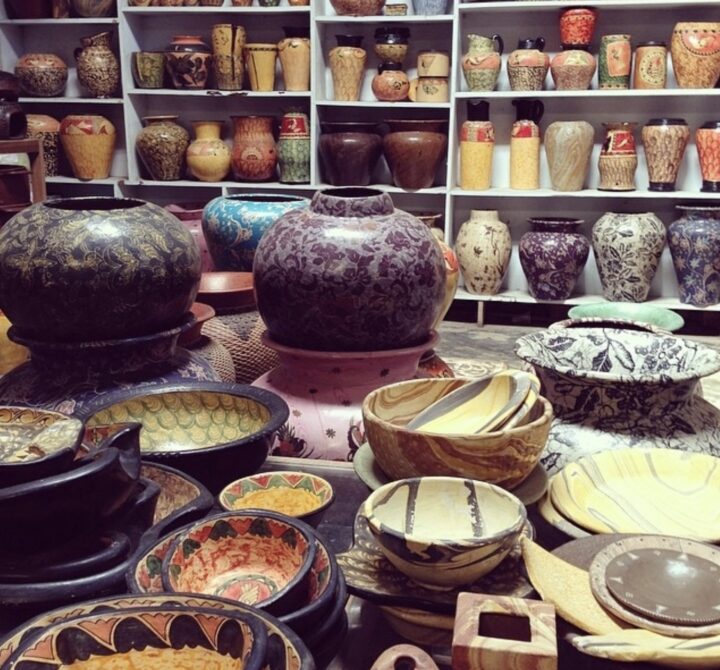As in many parts of Indonesia, traditional handicrafts are still being made in Lombok, the skills and techniques developed over centuries, being passed down from generation to generation.
The three main handicrafts produced in Lombok are pottery, basket weaving and rattan ware and woven textiles.
In most cases, the production of handicrafts is a ‘whole of village’ undertaking, occurring in areas where raw materials are plentiful.
Unlike other areas of Indonesia, where tourist demand has hastened the rise of a low-quality souvenir industry, Lombok handicrafts are, in the main, still genuine, hand-made items, which sell for a fraction of their true value.
Lombok Pottery

The history of pottery-making in Lombok stretches way back to the 16th century.
To this day, each item is hand-thrown and decorated, without the use of electricity or mechanical aids, such as a potter’s wheel.
The beauty and enduring appeal of this method means that no two pieces are ever exactly alike.
With direct access to clay-rich soils, the three main villages producing pottery in Lombok are Banyumulek, Masbagik and Penujak.
Each of these villages welcome tourists to view and participate in the pottery-making process.
While each village produces pieces that would typically be used from day-to-day, such as plates and bowls, vases, urns and water pitchers, each village has developed its own unique designs and motifs.
The pottery-making process involves a number of steps, which allow the entire community to participate.
Men source the clay and bring it to the village, women are responsible for making the individual pieces which are then handed over to village children to decorate. Traditionally, this was done with natural pigments and ochres, however modern glazes are now commonly used.
Once finished, it’s back to the men to oversee the firing.
Today Lombok Pottery is internationally recognised and sought after for the quality of work and originality of design.
Bamboo and Rattan Weaving

Products woven and made from bamboo and rattan are another example of a traditional enterprise which engages several families from a particular village, each family specialising in a certain stage of the production process.
One family will collect, prepare and dye the fibres, another will make individual pieces and yet another will be responsible for carving wooden animals and decorative motifs to attach to the finished items.
The list of products that can be made from bamboo and rattan includes everyday items such as handbags and purses, storage baskets, with or without lids, for clothing and personal items to floor mats, lightshades and indeed, most types of furniture. It is even sturdy enough to be woven into sheets and used to line walls and ceilings in traditional houses.
Kota Raja and Beleke are two villages that still practice traditional basket weaving as well as making other items from rattan and bamboo.
Textile Weaving

There is an extensive tradition across the islands of Indonesia of producing beautiful and distinctive pieces of hand-woven cloth which can be cut to make clothing, such as shirts and dresses, but more commonly, single pieces will be used as a sarong or shawl, or used as household items such as tablecloths and blankets.
Unlike Bali, Lombok does not have a batik-making tradition. Rather they use a variety of colored cotton and/or silk woven into intricate patterns with the help of a hand loom.
Both the process and the resulting unique cloth are known as “ikat”.
The most striking (and expensive) pieces of ikat, known as “songket” feature gold or silver thread woven through the cloth.
The process of making ikat cloth requires great patience and skill and one piece of cloth can take up to several weeks to complete.
In earlier times, ikat was typically made by a bride-to-be in the weeks leading up to her marriage, as a gift to her husband on their wedding night. The unique skill was so highly- prized, that young Sasak women who did not know how to weave were not able to wed! So although ikat weaving has traditionally been a female activity, in more recent times, men have started stepping up to the plate.
Travellers wishing to view the traditional art of ikat cloth weaving can do so in the villages of Sukarara (Central Lombok) and Pinggasela (East Lombok).
